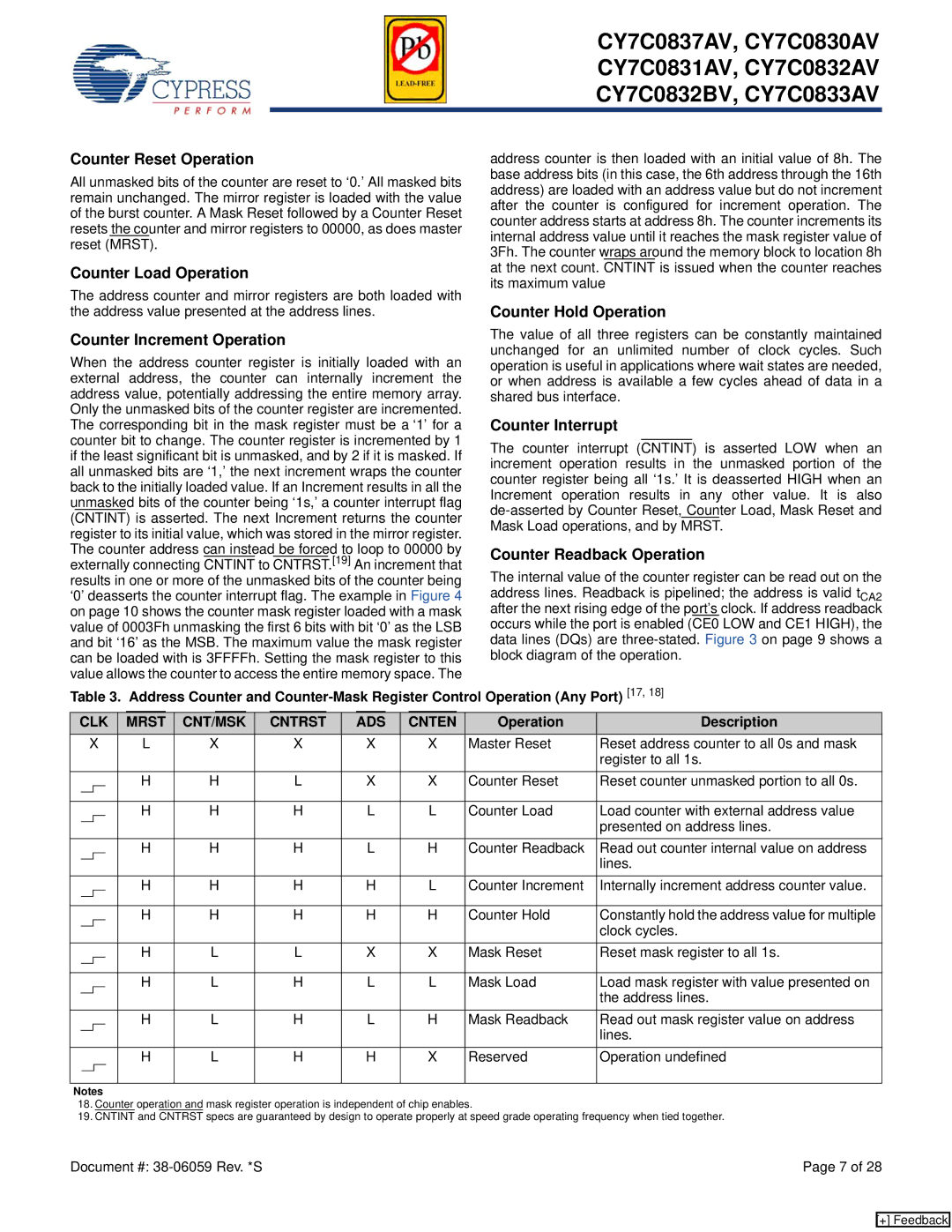CY7C0837AV, CY7C0833AV, CY7C0831AV, CY7C0830AV, CY7C0832AV specifications
Cypress Semiconductor, a leader in innovative semiconductor solutions, has developed a range of high-performance SRAM (Static Random Access Memory) products, including the CY7C0837AV, CY7C0833AV, CY7C0831AV, CY7C0830AV, and CY7C0832AV. These devices cater to various applications requiring fast, reliable memory storage.One of the main features of these SRAMs is their speed. They offer fast access times, which range from 10 to 15 nanoseconds. This rapid access is critical for applications where speed is essential, such as high-speed networking and telecommunications equipment, automotive systems, and industrial controls. The CY7C0837AV, for instance, boasts a 1 Mbit memory capacity, making it suitable for applications requiring a larger data buffer.
Another notable feature of these devices is their low power consumption. The SRAMs are designed to operate at low voltages, typically around 3.3V, which greatly reduces the overall power requirements. This characteristic is particularly advantageous for battery-operated devices and portable electronics, as it extends battery life and improves energy efficiency.
Cypress's SRAM offerings incorporate advanced technologies like asynchronous read and write operations, which enable users to access memory without the need for a clock signal. This asynchronous nature allows for simpler system designs and integration, significantly reducing component count and complexity.
In terms of packaging, these SRAMs are available in various formats, including standard DIP and surface-mount options, facilitating easy integration into a range of printed circuit boards. Their footprint and compatibility with existing designs ensure they can be utilized in both new developments and legacy system enhancements.
The CY7C0837AV, CY7C0833AV, CY7C0831AV, CY7C0830AV, and CY7C0832AV also support burst mode operations, allowing for faster sequential data access. This feature enhances performance in applications that require continuous data streams, such as video processing and signal processing tasks.
In summary, the Cypress CY7C0837AV, CY7C0833AV, CY7C0831AV, CY7C0830AV, and CY7C0832AV SRAMs provide a combination of high speed, low power consumption, and versatile packaging options. Their advanced technologies and characteristics make them ideal for a wide range of applications, from automotive to industrial systems, solidifying their position as reliable memory solutions in the semiconductor market.

